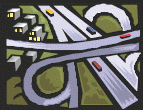If you have found that you are answering YES to the above questions, then the adult's learning challenges are most likely a result of a learning disability.

Assessment
Enhancing our journey through the merging of screening and assessment

The information gathered through the screening process is the foundation for both the practitioner and learner to build upon during the assessment process. Based on the findings gathered through the screening tool, you may both make decisions about what areas require further assessment and which types of assessment tools to use. In Chapter Two, we pointed out that the screening process should not be treated in isolation, as it is really the beginning stage of the assessment process. It helps the practitioner to determine what areas need to be addressed further.
With the help of informal assessment tools, our journey of discovery can become more in-depth, allowing us to investigate clues that may lead us to the eventual destination: "the training plan." Together, through this information gathering process, the practitioner and learner can feel confident that the training plan truly reflects the learner's strengths and addresses the appropriate learning barriers. Asking the learner to join you on the journey and be active in the process of discovery helps to foster the learner's personal accountability for his/her learning success. This discovery process also helps learners to understand themselves and build self-esteem and pride.